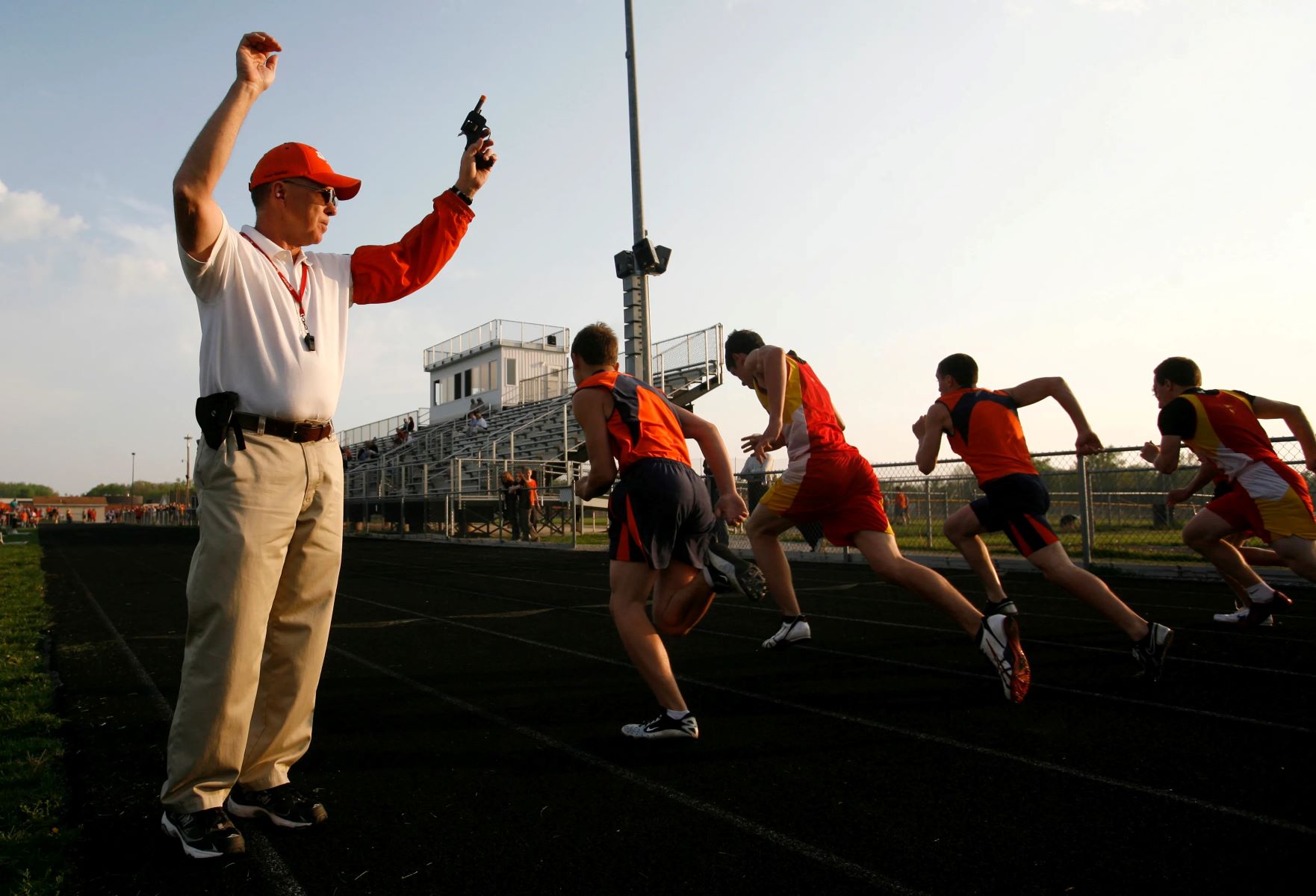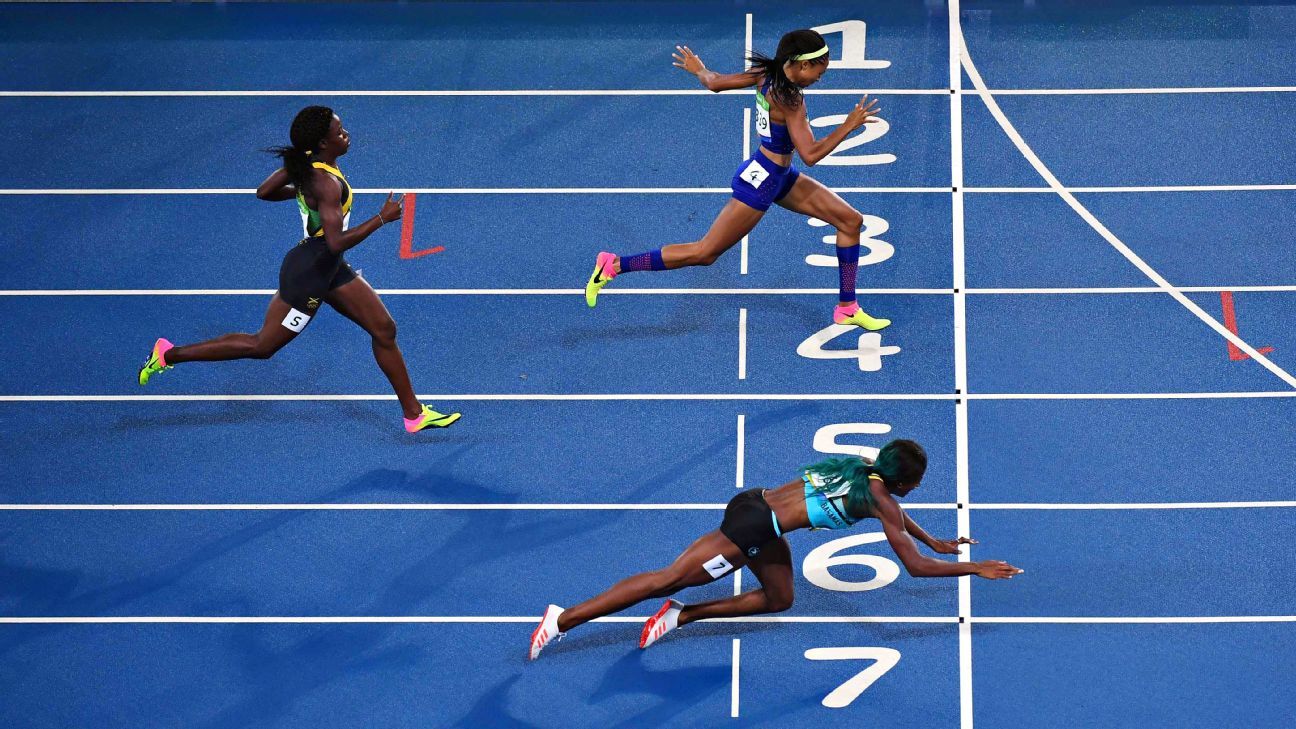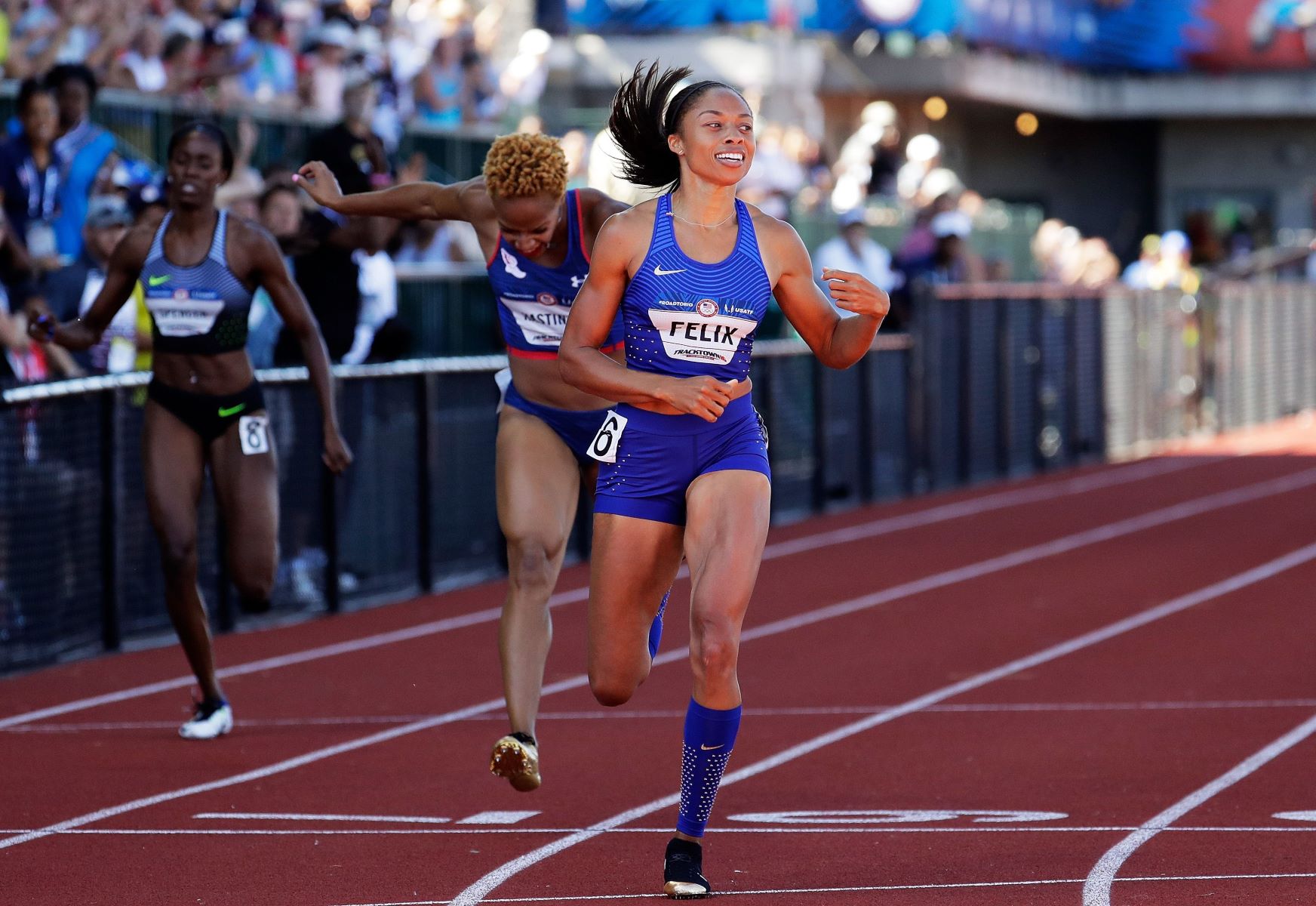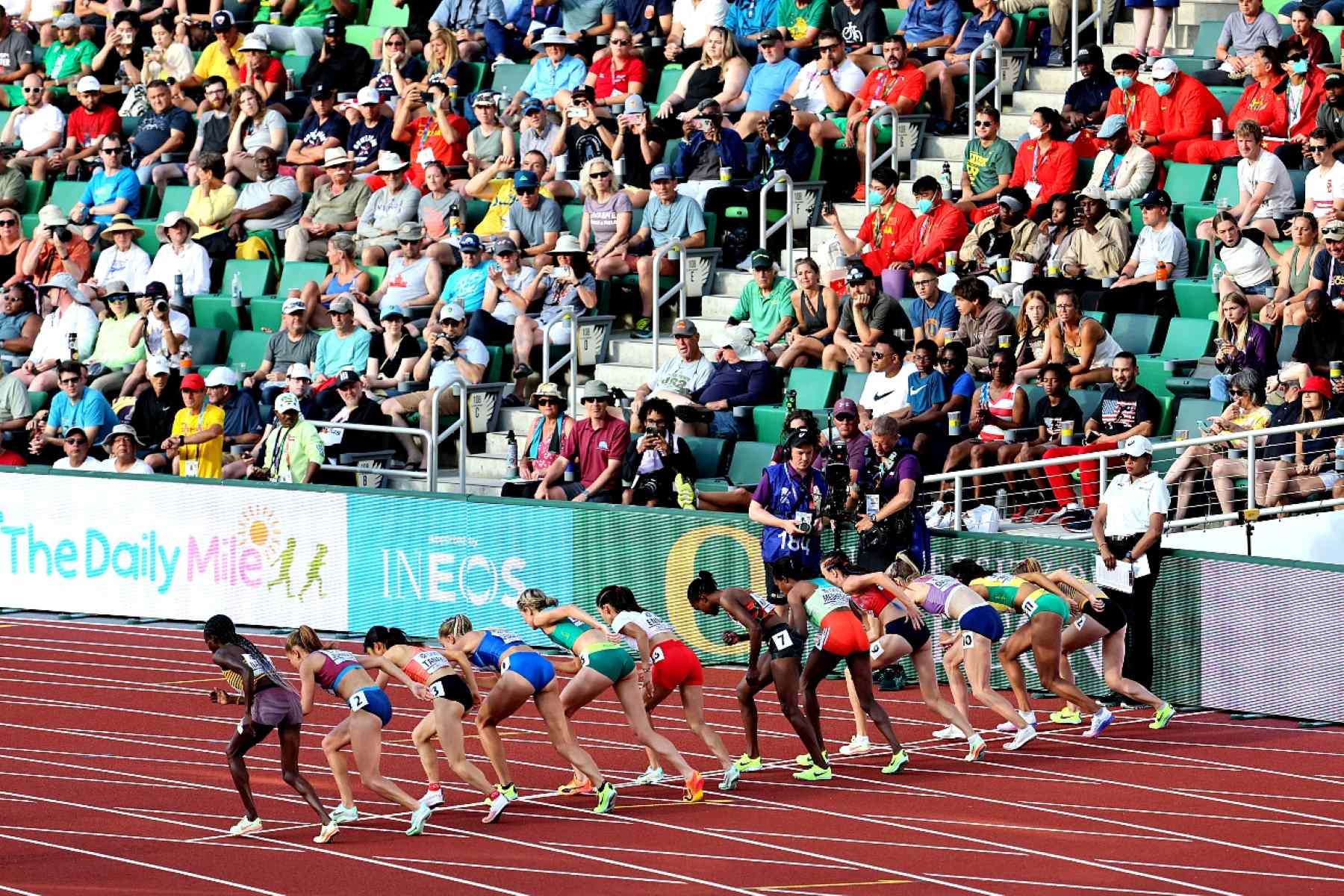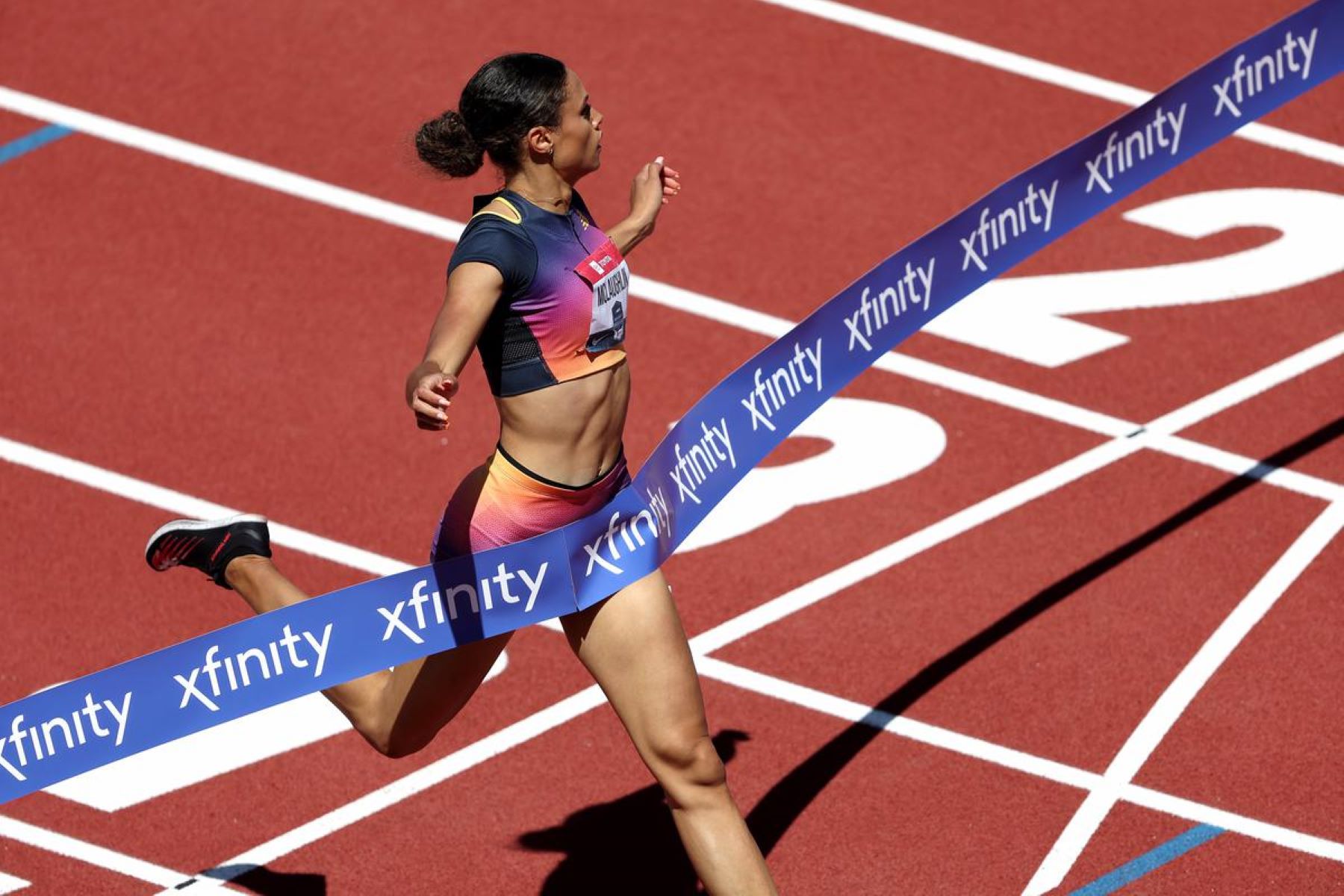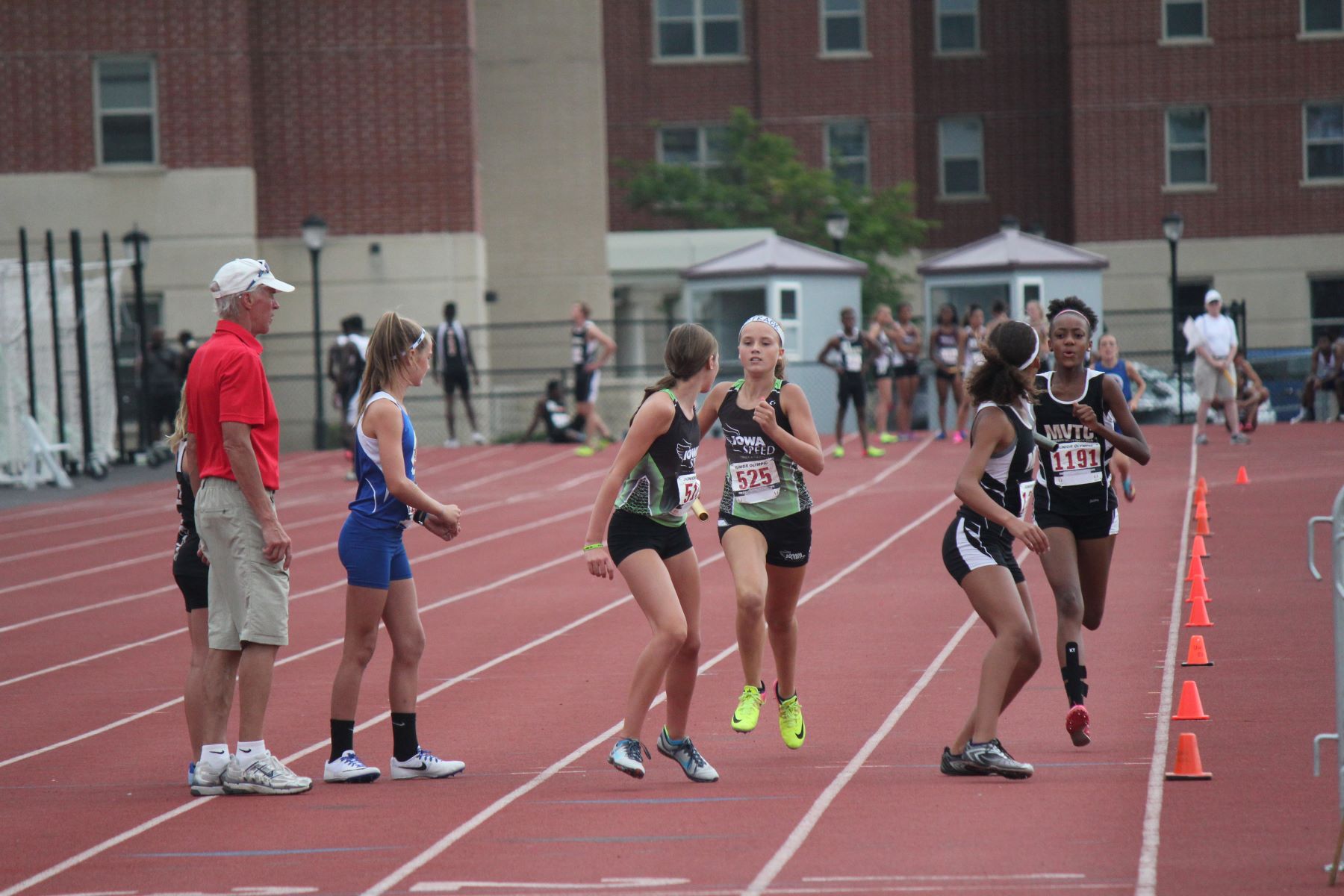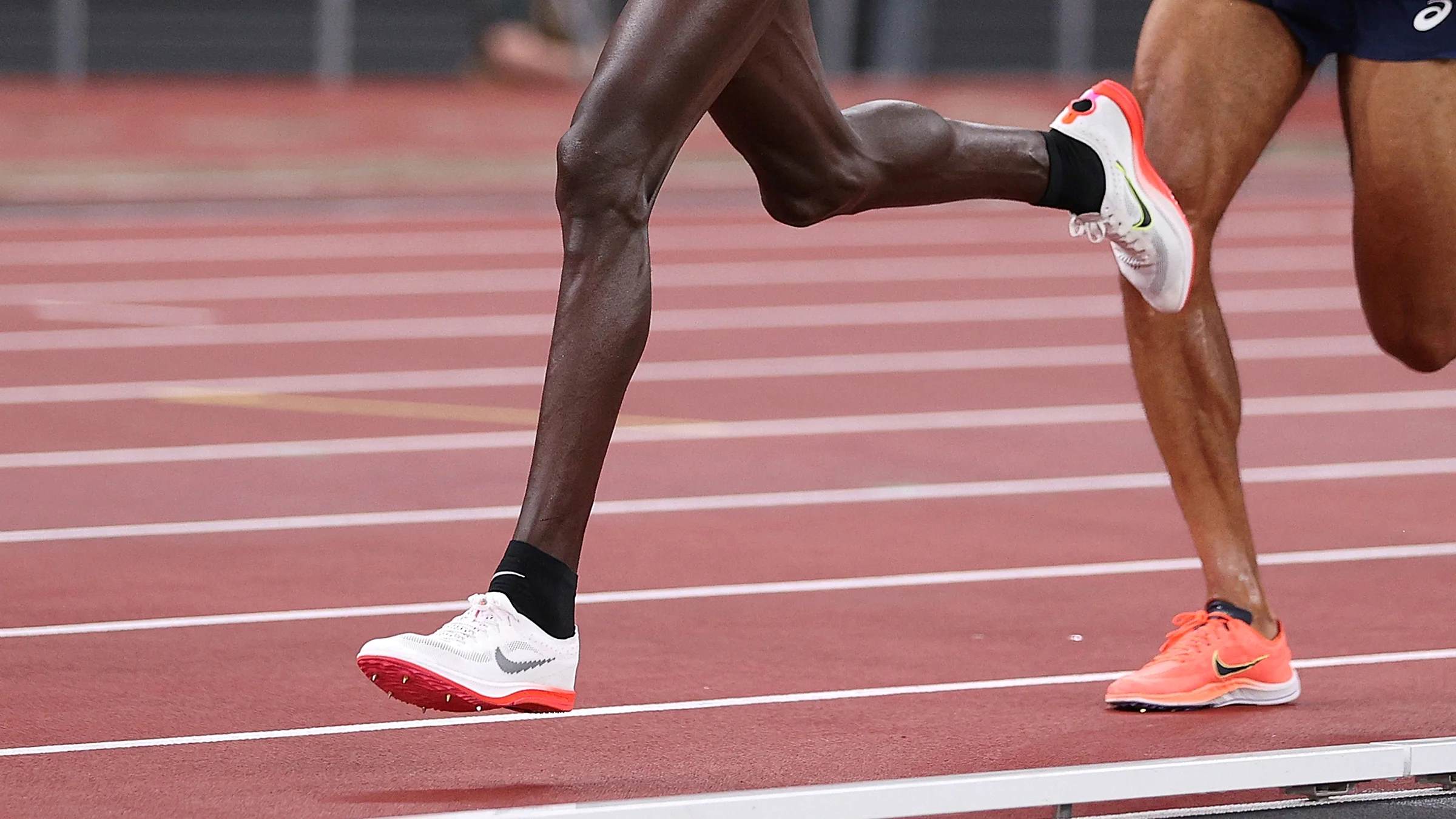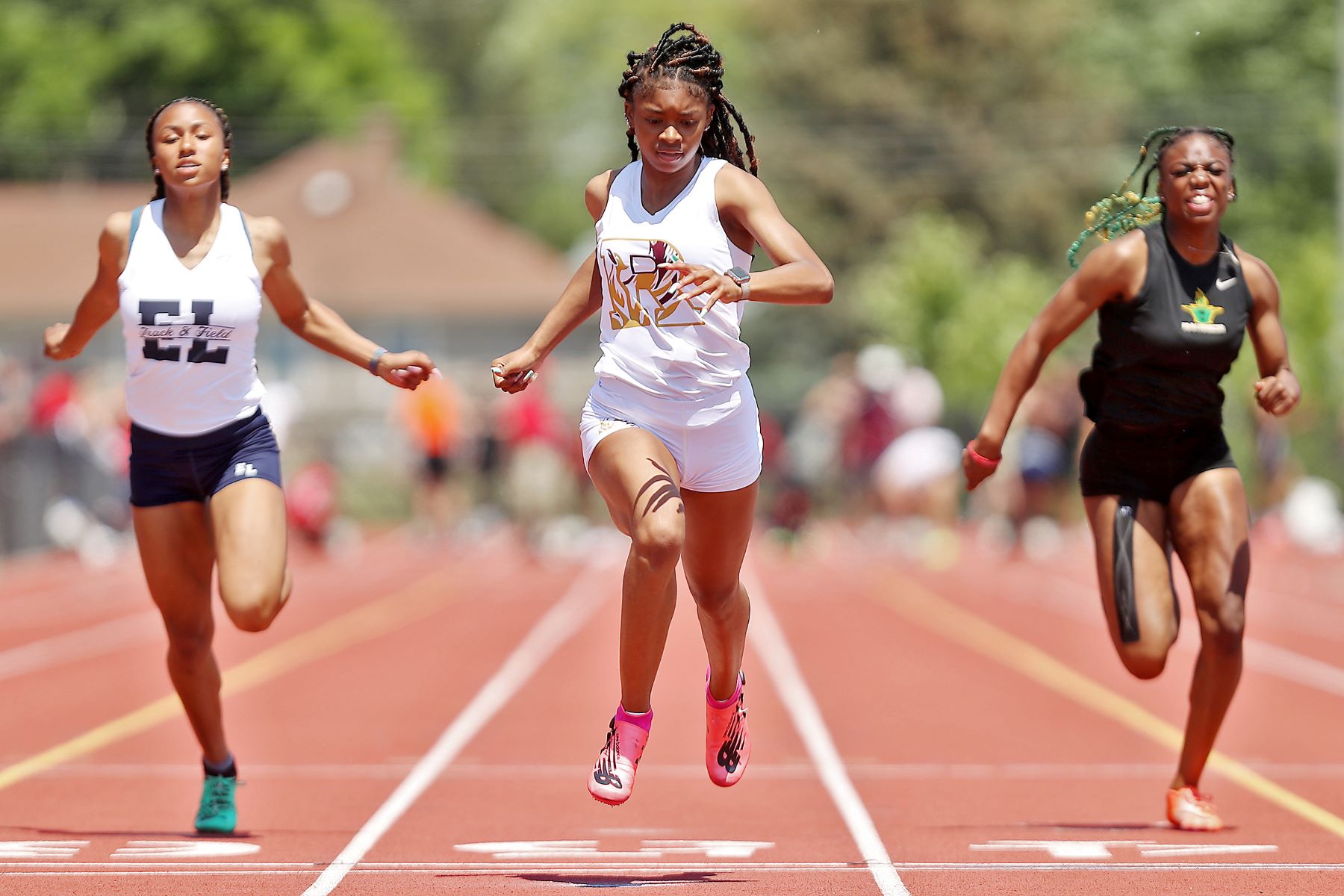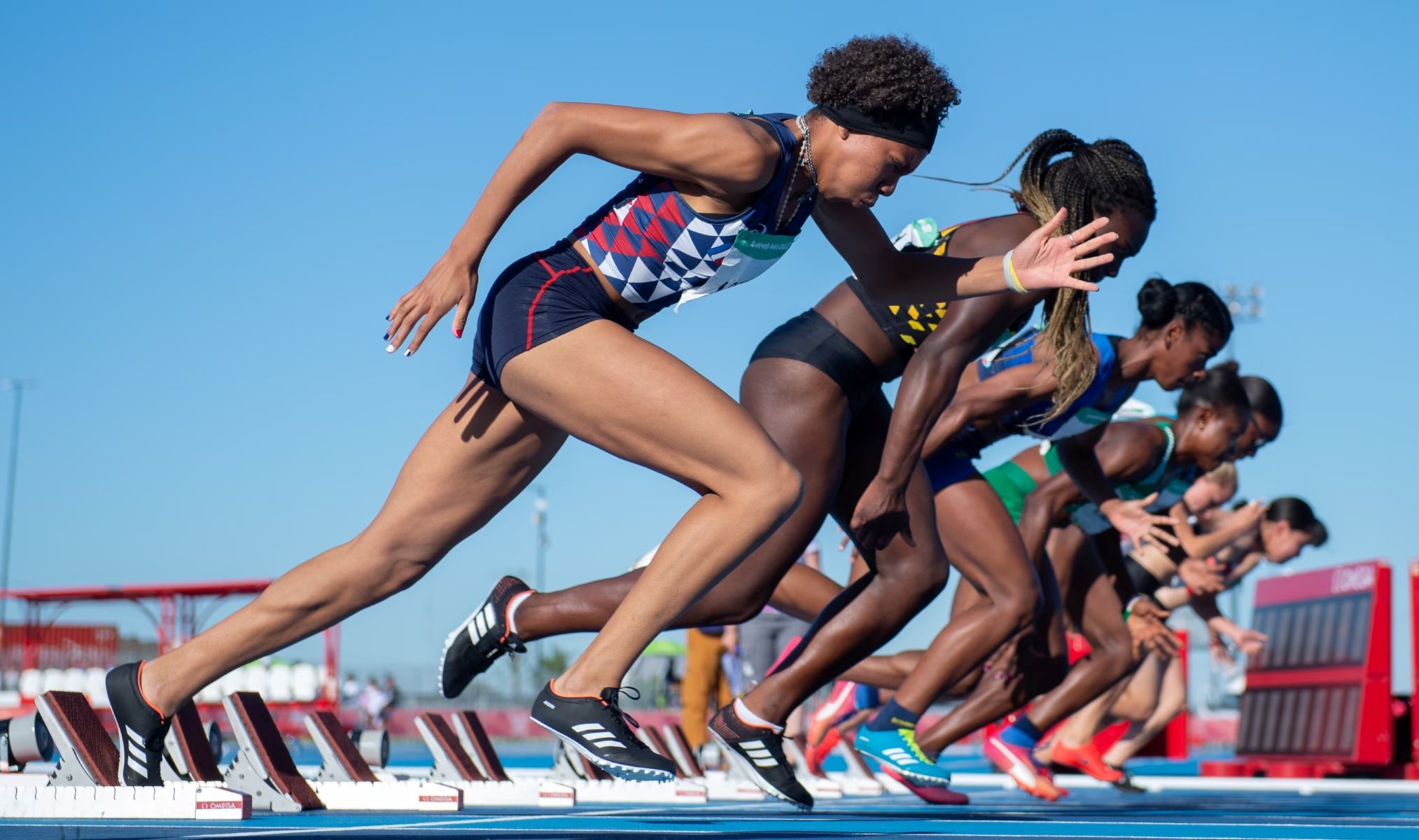

Featured
Who Won The Women’s 100M Track And Field
Modified: January 2, 2024
Discover who won the Women's 100M track and field event in this exciting featured race.
Introduction
The Women’s 100M track and field event is one of the most highly anticipated and thrilling competitions in the world of athletics. It showcases the incredible speed, agility, and determination of elite female athletes, captivating audiences around the globe. This event has a long and storied history, with a legacy of inspiring performances and record-breaking achievements.
Every four years, during major international athletics competitions like the Olympics or World Championships, the Women’s 100M race takes center stage, attracting attention from sports enthusiasts and casual viewers alike. It’s a breathtaking sprint that lasts just a few seconds but leaves a lasting impression.
At the start line, the anticipation is palpable as the athletes prepare to explode off the blocks, pushing their bodies to the limits in pursuit of victory. This race is not just about speed; it requires impeccable technique, a perfectly timed drive phase, and mental fortitude to maintain focus amidst the chaos.
Beyond the physical component, the Women’s 100M track and field event represents much more. It symbolizes the triumph of the human spirit, determination, and dedication to excellence. It showcases the power of women in sports and serves as an inspiration to young girls dreaming of achieving greatness on the track.
With each passing competition, we witness new stars emerging and old records being shattered. This event is a testament to the progression of women’s athletics, highlighting the advancements in training methods, sports science, and overall athleticism.
In this article, we will delve into the exciting world of the Women’s 100M track and field event. We will explore the background of this prestigious race, analyze the contenders, provide a race overview, and share the celebrations and reactions from the victorious athlete and spectators.
Background of the Women’s 100M Track and Field
The Women’s 100M track and field event has a rich history that spans several decades. It was first introduced to international athletics in the early 20th century and has since evolved to become one of the premier events in the sport.
In 1922, the International Association of Athletics Federations (IAAF) officially recognized the Women’s 100M as a competitive event. However, it wasn’t until the 1928 Olympics in Amsterdam that women were allowed to participate in the race at the highest level of international competition.
Since its inception, the Women’s 100M has undergone various changes and adaptations. Initially, the race was run on a grass track, and athletes competed in traditional athletic attire. Over time, advancements in technology and training techniques led to significant improvements in performance.
One of the most significant milestones in the history of the Women’s 100M track and field occurred in 1988 when Florence Griffith-Joyner, widely known as Flo-Jo, set a world record that still stands to this day. Her remarkable time of 10.49 seconds sent shockwaves through the athletics community and cemented her as one of the greatest sprinters of all time.
The Women’s 100M has also seen fierce rivalries and intense competition between notable athletes. From the iconic showdowns between Florence Griffith-Joyner and Evelyn Ashford in the 1980s to the more recent battles between Shelly-Ann Fraser-Pryce and Elaine Thompson-Herah, these rivalries have added extra excitement and intrigue to the event.
Another important aspect of the Women’s 100M track and field is the impact it has had on popular culture. The success of athletes like Florence Griffith-Joyner and Marion Jones helped elevate the profile of women’s athletics and inspire a new generation of athletes.
Today, the Women’s 100M remains a marquee event in the sport, captivating audiences with its raw energy and jaw-dropping displays of speed. It serves as a platform for female athletes to showcase their talent, resilience, and determination.
In the next sections, we will explore the top contenders in the Women’s 100M race and provide an overview of the race itself.
Contenders in the Women’s 100M Track and Field
The Women’s 100M track and field event attracts a field of exceptional athletes who possess the speed, strength, and technique necessary to compete at the highest level. These contenders come from diverse backgrounds and have honed their skills through years of dedicated training and competition.
One of the perennial favorites in the Women’s 100M is Shelly-Ann Fraser-Pryce from Jamaica. Known for her explosive starts and exceptional top-end speed, Fraser-Pryce has dominated the event for over a decade. Her fierce determination and smooth running style make her a formidable opponent on the track.
Another standout athlete is Elaine Thompson-Herah, also from Jamaica. Thompson-Herah burst onto the scene in 2016 when she won both the 100M and 200M at the Rio Olympics. She possesses a combination of power and grace that allows her to maintain incredible speed throughout the race.
From the United States, we have the likes of Sha’Carri Richardson, a rising star known for her electrifying personality and blistering speed. Richardson’s explosive starts and strong finishes have earned her attention and put her in contention for top honors in the Women’s 100M.
Looking to challenge the traditional powerhouses is Dina Asher-Smith from Great Britain. Asher-Smith’s smooth running style and technique make her a force to be reckoned with. She has consistently produced impressive performances and has the ability to upset the rankings.
Other notable contenders in the Women’s 100M include Marie-Josée Ta Lou from Ivory Coast, a consistent performer with impressive speed, and Blessing Okagbare from Nigeria, who combines power and agility to deliver impressive performances.
While these athletes emerge as strong contenders, the Women’s 100M is known for its unpredictability. The nature of the race makes it susceptible to upsets and surprises. Underdogs have the potential to rise to the occasion and deliver breakthrough performances that leave the world in awe.
Regardless of the outcome, the Women’s 100M track and field event promises to be a thrilling showcase of speed, skill, and determination. These exceptional athletes will leave everything on the track, striving to etch their names in history and secure their place among the legends of the sport.
Next, we will provide an overview of the Women’s 100M race, giving insight into its structure and unique challenges.
Race Overview
The Women’s 100M track and field race is a fast-paced, adrenaline-fueled sprint that tests the speed, technique, and mental fortitude of the athletes. It is a single-lap event that takes place on a standard 400-meter track.
The race begins with the athletes positioned in starting blocks, crouched in a low position, ready to explode off the line as soon as the gun sounds. The ability to get a quick and powerful start is crucial in gaining an early advantage in the race.
Once the race begins, the athletes drive their legs forward, pumping their arms in sync with the rhythm of their sprint. They must maintain a strong acceleration phase, quickly reaching their top speed over the first 30-40 meters of the race.
As they near the halfway mark, the athletes transition to an upright running position and enter the maximum velocity phase of the race. This phase requires maintaining top-end speed while fighting against fatigue and deceleration.
The final portion of the Women’s 100M is the most critical. The athletes must give their final burst of energy, pushing their bodies to the limit, as they approach the finish line. It is common to see a lean at the finish, where athletes extend their torso forward in an attempt to gain any possible advantage over their opponents.
The race is typically completed in less than 11 seconds, making it one of the shortest and most intense events in athletics. The margin of victory is often a matter of milliseconds, highlighting the incredible competitiveness and tight finish that spectators have come to expect.
While speed is the primary focus of the Women’s 100M, technique also plays a critical role. Athletes must maintain a relaxed yet powerful stride, driving their knees high and maintaining a strong arm swing.
The Women’s 100M race poses unique challenges for athletes. The explosive start demands a quick reaction time off the blocks, and the athletes must navigate the fine line between pushing their bodies to the limit without risking a false start.
Another challenge is managing nerves and maintaining focus amidst the intense atmosphere and the presence of fast opponents. Staying mentally composed and executing the race strategy flawlessly can be the difference between winning and finishing out of the podium.
In the next section, we will analyze the race and provide an in-depth understanding of the strategies and factors that contribute to success in the Women’s 100M track and field event.
Analysis of the Race
The Women’s 100M track and field race is not solely dependent on raw speed but also demands a combination of skill, strategy, and mental toughness. Let’s delve into the various factors that contribute to success in this exhilarating event.
Starts: A fast and powerful start can give athletes a crucial advantage in the Women’s 100M race. The ability to explode off the blocks and maximize the first few strides is essential. Athletes must find the perfect balance between quickly getting out of the blocks and avoiding a false start.
Acceleration: The acceleration phase is critical for athletes to reach their top speed as quickly as possible. Proper technique, strong leg drive, and a powerful arm swing contribute to increased acceleration. Athletes must focus on maintaining a strong drive phase and generating maximum power through each stride.
Technique: Good running technique helps athletes optimize their speed and efficiency in the race. A relaxed yet powerful stride, high knee lift, and strong arm movement are key components. Athletes must also maintain proper posture and body alignment to maximize their performance.
Mid-Race Tactics: As the athletes approach the halfway mark, maintaining top-end speed while managing fatigue becomes paramount. Smart pacing and maintaining a strong mental focus are crucial during this phase. Athletes must conserve energy without compromising their overall tempo.
Finish: The final meters of the Women’s 100M race often determine the winner. Athletes must summon their last reserves of strength and give a final burst of energy to cross the finish line. Maintaining proper form, leaning forward, and gaining any possible advantage can make all the difference in securing victory.
Environmental Factors: External conditions, such as wind speed and direction, can significantly impact race results. Tailwinds can provide a slight boost, while headwinds can slow down athletes. Weather conditions must be carefully considered, and athletes may need to adjust their strategy accordingly.
Mental Strength: The Women’s 100M race is as much a psychological battle as it is a physical one. Athletes must remain focused, composed, and block out any distractions or nerves. Confidence, mental toughness, and the ability to perform under pressure are crucial for success in this high-stakes event.
It is worth noting that even with meticulous training and preparation, unexpected circumstances can influence the outcome of the race. Factors such as injuries, false starts, or disqualifications can completely alter the dynamics and shake up the predicted results.
An in-depth analysis of each athlete’s strengths, weaknesses, and previous performances can provide valuable insights into their race strategies. Coaches, analysts, and the athletes themselves study video footage, analyze data, and refine their techniques to gain a competitive edge.
In the next section, we will finally reveal the winner and share the exhilaration and celebrations that follow their victory in the Women’s 100M track and field event.
Announcement of the Winner
After an intense competition in the Women’s 100M track and field event, the moment arrives when the winner is officially announced. Suspense fills the air as the athletes eagerly await the announcement, and spectators hold their breath in anticipation.
The announcement is typically made by the race officials, who carefully review photo finishes and electronic timing systems to determine the winner. They analyze every detail, ensuring accuracy and fairness in the decision-making process.
Once the verdict is reached, the excitement builds as the announcer takes to the microphone to reveal the name of the victorious athlete. The crowd erupts with applause and cheers, celebrating the incredible achievement of the women who pushed their bodies to the limits in pursuit of victory.
The winner’s emotions are often palpable as they realize their hard work and dedication have paid off. A mixture of relief, joy, and pride washes over them, knowing they have etched their name into the history books of the Women’s 100M event.
Cameras flash and reporters crowd around the winner, eager to capture their immediate reactions and emotions. Microphones are thrust in front of them as they try to gather their thoughts and express their feelings in the midst of the adrenaline-fueled moment.
The announcement of the winner also marks the end of the race for the other competitors. As they absorb the disappointment of not claiming victory, they commend the winner and acknowledge the efforts and incredible performance of all the athletes involved. It is a moment of respect and appreciation for the sheer talent and determination displayed on the track.
For the winning athlete, the announcement sets off a whirlwind of celebrations, accolades, and media attention. They are congratulated by fellow competitors, coaches, and fans, who recognize their exceptional achievement.
The victory in the Women’s 100M track and field race brings a sense of accomplishment that extends beyond the individual athlete. It is a triumph for their country, their coaches, and their support system, whose unwavering belief helped propel them to success.
In the next section, we will delve into the celebrations and reactions that follow the announcement of the winner in the Women’s 100M race.
Celebrations and Reactions
As the announcement of the winner reverberates through the stadium, celebrations erupt and emotions run high in the aftermath of the Women’s 100M track and field race. The victorious athlete embraces the moment, basking in the glory of their triumph.
The celebration starts with an exuberant display of elation. The winning athlete pumps their fists, throws their arms in the air, and lets out a scream of joy and relief. They may jump, wave to the crowd, or perform their signature victory pose, expressing the culmination of years of hard work and sacrifice.
The celebrations are not limited to the winner alone. Fellow competitors often join in, offering congratulations and hugs to acknowledge the exceptional performance. A sense of camaraderie and sportsmanship prevails, as the athletes demonstrate respect and appreciation for each other’s dedication to the sport.
The crowd, too, becomes an integral part of the celebration. Spectators rise to their feet, applauding the victorious athlete and sharing in the sheer excitement of witnessing such a remarkable achievement. Chants and cheers echo throughout the stadium, creating an electric atmosphere.
The media plays a significant role in capturing the celebrations and reactions of the winning athlete. Microphones are thrust toward them, and interviews are conducted to capture their immediate thoughts and emotions. Joy and adrenaline permeate their words as they express gratitude to their support team, reflect on their journey, and proclaim their pride in representing their country.
The celebrations extend beyond the immediate aftermath of the race. Victorious athletes often partake in victory laps around the track, waving to the crowd and expressing gratitude for their unwavering support. They may also be honored with accolades, medals, and trophies during formal ceremonies, adding to the sense of accomplishment.
Back in their home countries, the winning athlete is welcomed with open arms. Parades, receptions, and special events are organized to celebrate their monumental achievement. They become symbols of inspiration and national pride, serving as role models for aspiring athletes.
Reactions from the sports community and the general public are also an integral part of the post-race celebrations. Social media platforms explode with messages of congratulations, admiration, and awe. Fans express their appreciation for the indomitable spirit and tremendous performance of the winning athlete.
Celebrations and reactions from the Women’s 100M track and field event resonate far beyond the immediate moment. They inspire future generations of athletes, fostering a love for the sport and motivating young individuals to chase their dreams and reach for their own personal victories.
As the festivities continue, it is a testament to the enduring impact and enduring legacy of the Women’s 100M race in the world of athletics, where the celebration of triumphs and the admiration for exceptional athletes know no bounds.
Conclusion
The Women’s 100M track and field event represents the epitome of speed, skill, and determination in athletics. From its rich history to the exhilarating race itself, this event captivates audiences around the world and leaves a lasting impact on athletes and spectators alike.
Throughout the years, the Women’s 100M has seen incredible performances, fierce rivalries, and inspiring moments of triumph. Athletes like Flo-Jo, Shelly-Ann Fraser-Pryce, and many others have pushed the boundaries of human potential, setting world records and etching their names in the annals of sports history.
The anticipation before the race, the explosive starts, the lightning-fast sprints, and the thrilling finishes all contribute to the allure of the Women’s 100M. Each athlete brings their own unique style and technical prowess to the event, making every race a spectacle to behold.
But the Women’s 100M is not just about individual achievement. It represents the empowerment of women in sports and showcases the indomitable spirit and resilience of female athletes. It inspires young girls to dream big, work hard, and pursue their own athletic goals.
From the announcement of the winner to the celebrations and reactions that follow, the Women’s 100M race is a momentous occasion. It ignites excitement and camaraderie among competitors and spectators, reminding us of the incredible unity and universal love for the sport.
As we reflect on the legacy of the Women’s 100M track and field event, we are reminded of the progression of women’s athletics and the continuous pursuit of excellence. It serves as a testament to the boundless potential of athletes and the lasting impact they have on the world stage.
So, let us revel in the awe-inspiring performances, celebrate the victories, and pay tribute to the athletes who leave an indelible mark in the Women’s 100M track and field event. They are the embodiment of the human spirit, pushing the limits of what is possible and inspiring us all to strive for greatness.
The Women’s 100M race will continue to captivate us, fuel our imagination, and remind us of the incredible power and beauty of sport. It is a testament to the human pursuit of excellence, unifying people from all walks of life in their shared admiration for the indomitable spirit of the athletes.
